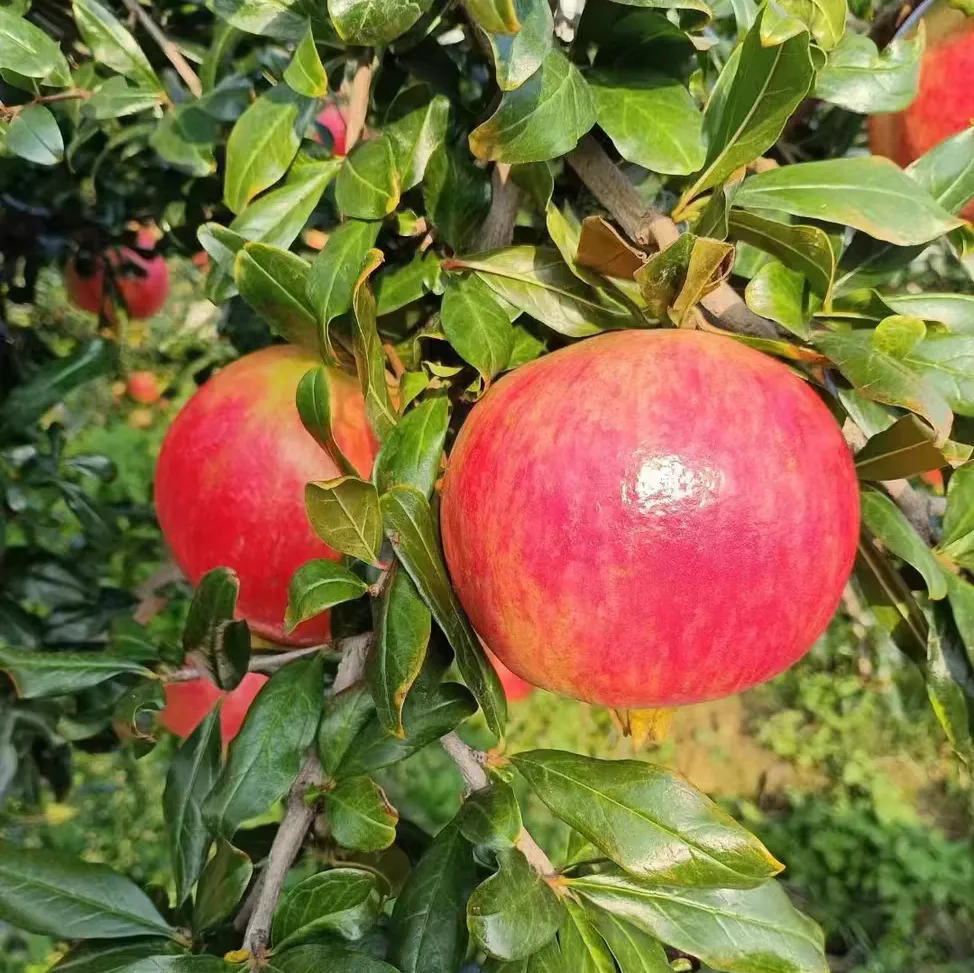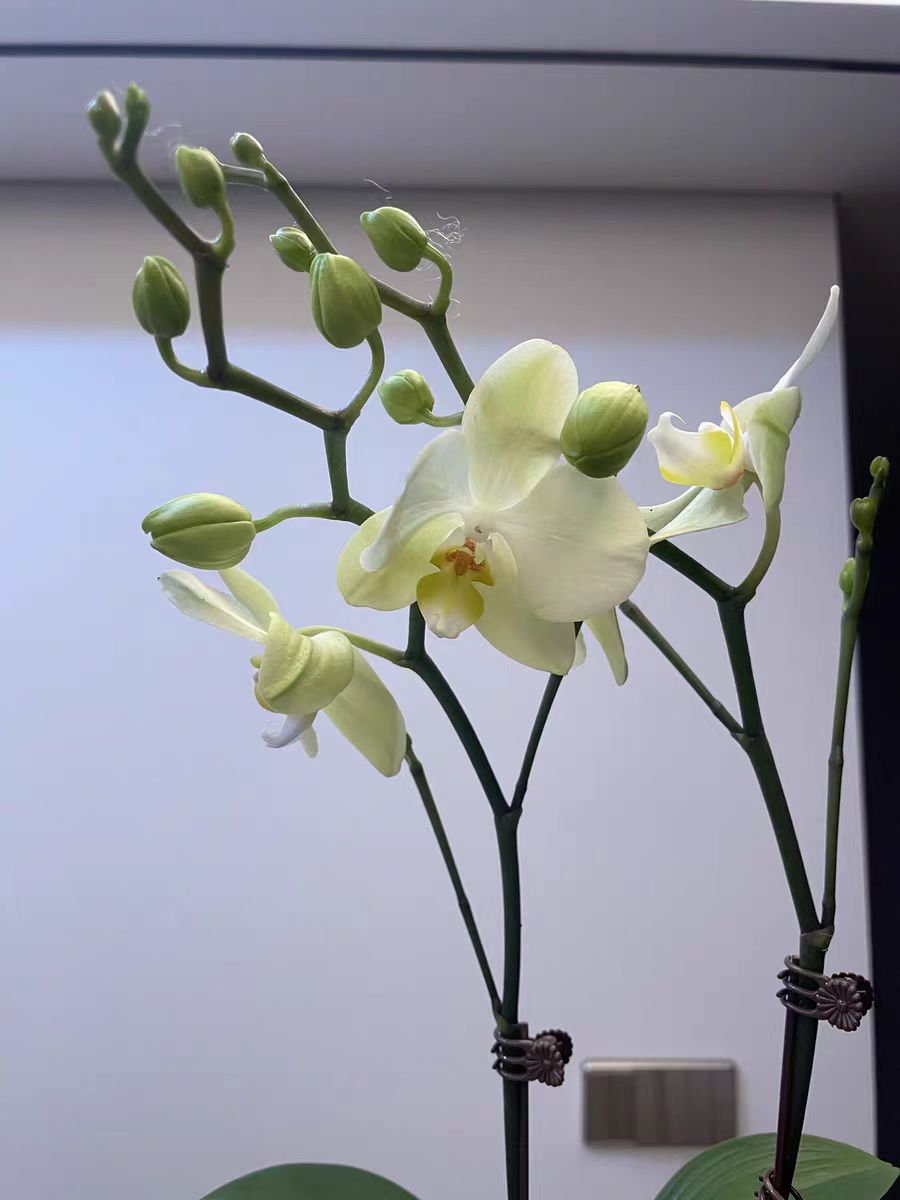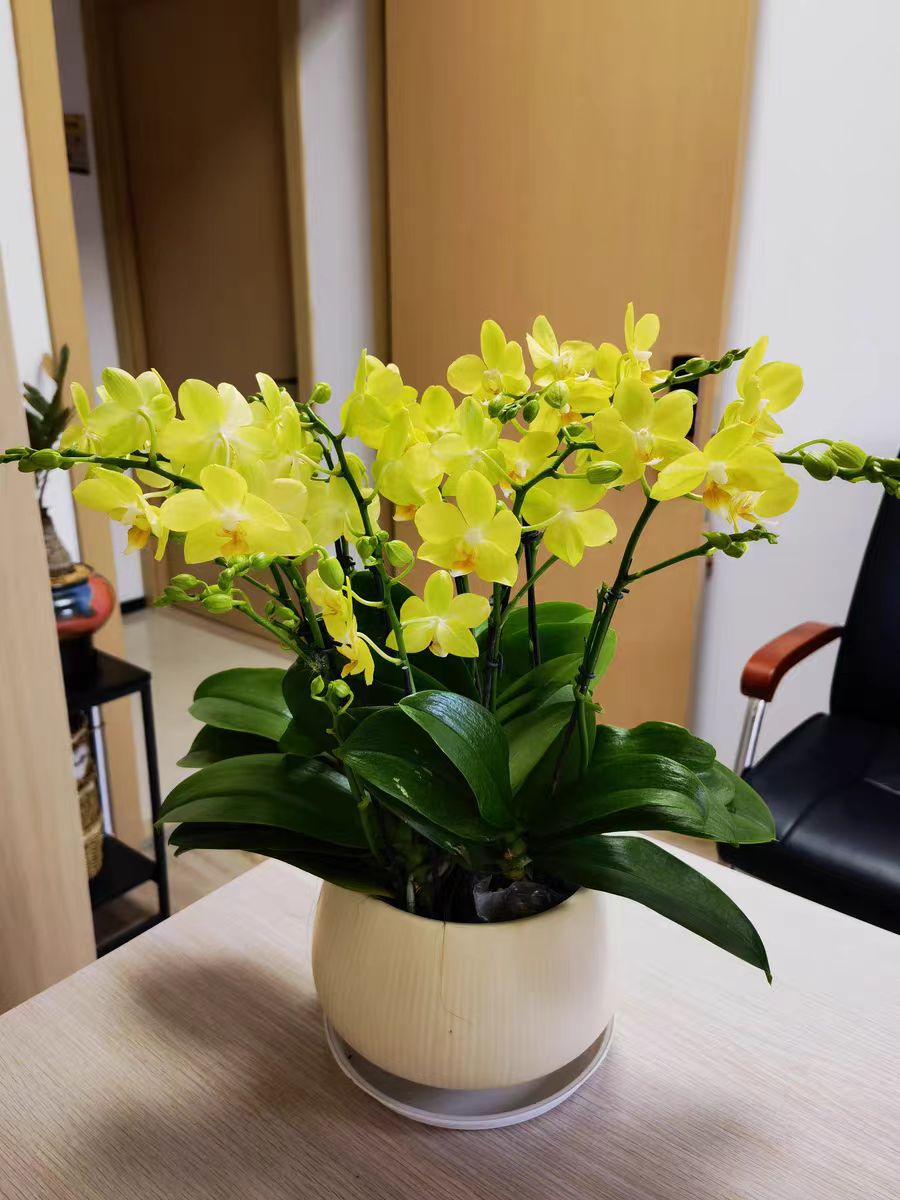Planting fruit trees in the courtyard is a choice that not only beautifies the environment but also fills life with interest. Here are several types of fruit trees recommended to you, which are the top choices for courtyard planting.
Pomegranate Tree
The trunk of the pomegranate tree is primitive and vigorous, its branches are winding and graceful. The leaves are long and narrow, lanceolate, bright green and shiny. In May, pomegranate flowers are in full bloom, as gorgeous as flames. The pomegranate flowers blooming on the branches have layers of petals, bright and eye-catching, like red silk dancing, passionate and unrestrained, adding a touch of magnificent color to the courtyard. In autumn, when the pomegranate fruits ripen, their skins are either red or yellow, the fruits are plump and round, and the seeds are crystal clear, as bright as rubies. The pomegranate pulp is juicy, sweet and sour, rich in antioxidants such as vitamin C and pomegranate polyphenols, which has the effects of beautifying the complexion and delaying aging. The pomegranate symbolizes having many descendants and prosperity, and occupies an important position in traditional culture.
Persimmon Tree
The persimmon tree is tall and straight, with a broad crown. Its bark splits in square shapes, showing a primitive appearance. The leaves are broad and oval, with a deep green and shiny surface and a light green back. In autumn, the leaves turn red after being frosted, colorful and magnificent. The persimmon flowers are yellowish-white, small and delicate, growing in the axils of the leaves. In autumn, when the persimmons ripen, the fruits are flat-round or conical, with an orange-red or golden-yellow color, like lanterns hanging high on the branches. Persimmons are rich in nutrients such as carotene and vitamin C. They can be eaten fresh, made into dried persimmons or used to make wine. The persimmons after being frosted have a soft, glutinous, sweet taste, symbolizing that everything goes well, adding a strong sense of autumn and the joy of harvest to the courtyard.
Fig Tree
The fig tree is short in shape, with thick branches. Its bark is smooth and grayish-brown. The leaves are large and rough, palmately lobed, dark green and covered with fine hairs. The flowers of the fig are hidden inside the urn-shaped receptacles and are not easily noticed. The fruits are pear-shaped or oblate, with yellow-green or purplish-red skins. When ripe, the fruits are soft, the pulp is fine and sweet, rich in nutrients such as proteins, vitamins and minerals, and has the functions of strengthening the spleen, helping digestion and relieving constipation. The fig tree has strong adaptability, few pests and diseases, and is easy to maintain and manage. It can also thrive in the limited space of the courtyard, quietly offering sweet fruits and bringing simple and delicious enjoyment to courtyard life.
Besides the above-mentioned fruit trees, there are many other fruit tree varieties suitable for courtyard planting, such as peach trees, pear trees, grapevines and so on. When choosing courtyard fruit trees, in addition to considering the ornamental value of the fruit trees and the deliciousness of the fruits, attention should also be paid to factors such as the growth habits, cold tolerance and disease resistance of the fruit trees to ensure that the fruit trees can grow healthily in the courtyard and bring more fun and benefits to the family.
In addition, when planting fruit trees, attention should also be paid to reasonable layout, timely pruning, pest and disease control and other issues to ensure the healthy growth of the fruit trees and the quality of the fruits. Through careful maintenance and management, I believe that everyone will surely be able to harvest plenty of fruits and joy in the courtyard.
What fruit trees are nice - looking and delicious to plant in the courtyard?

Share with
Tagged in :




Leave a Reply